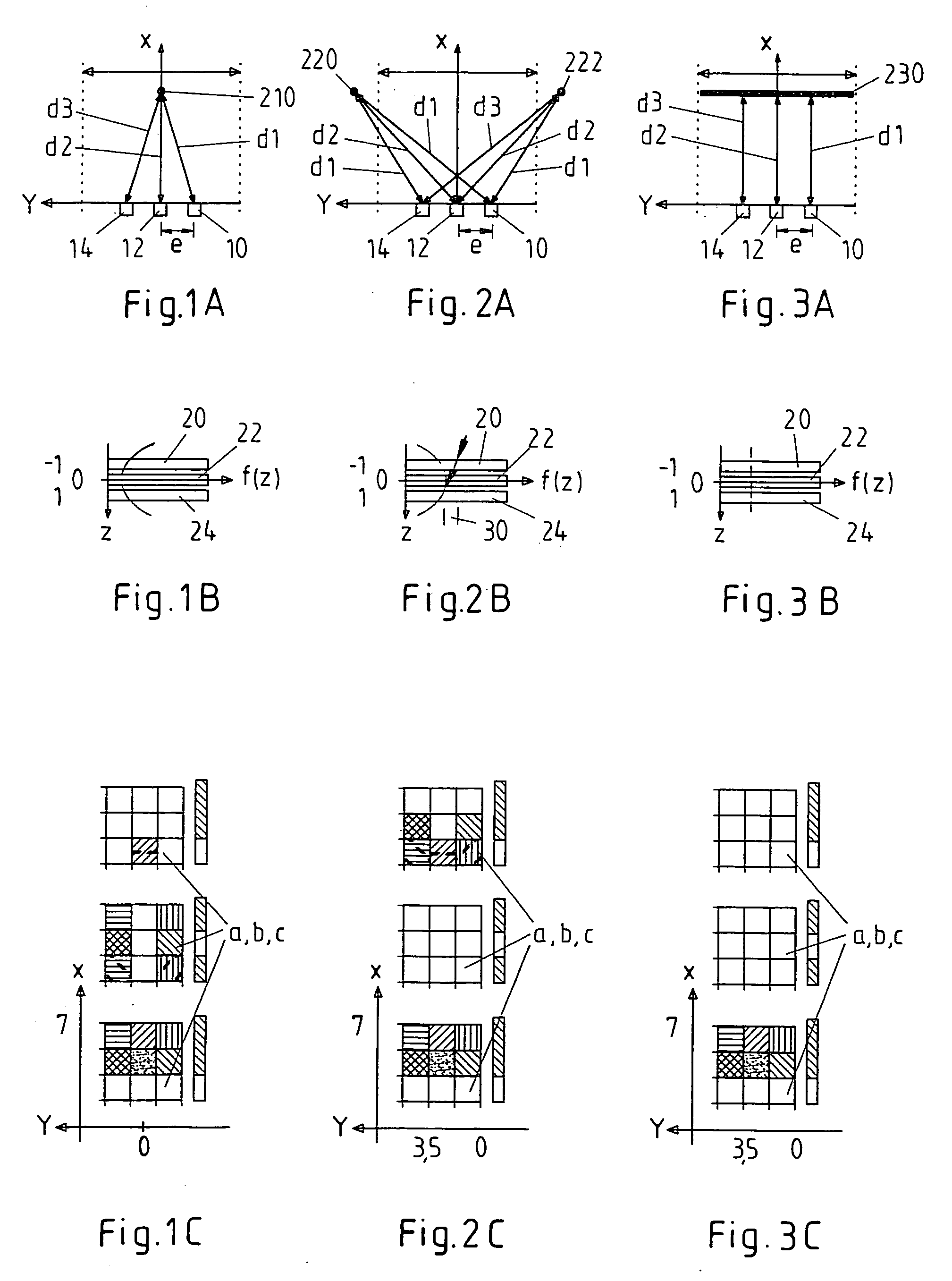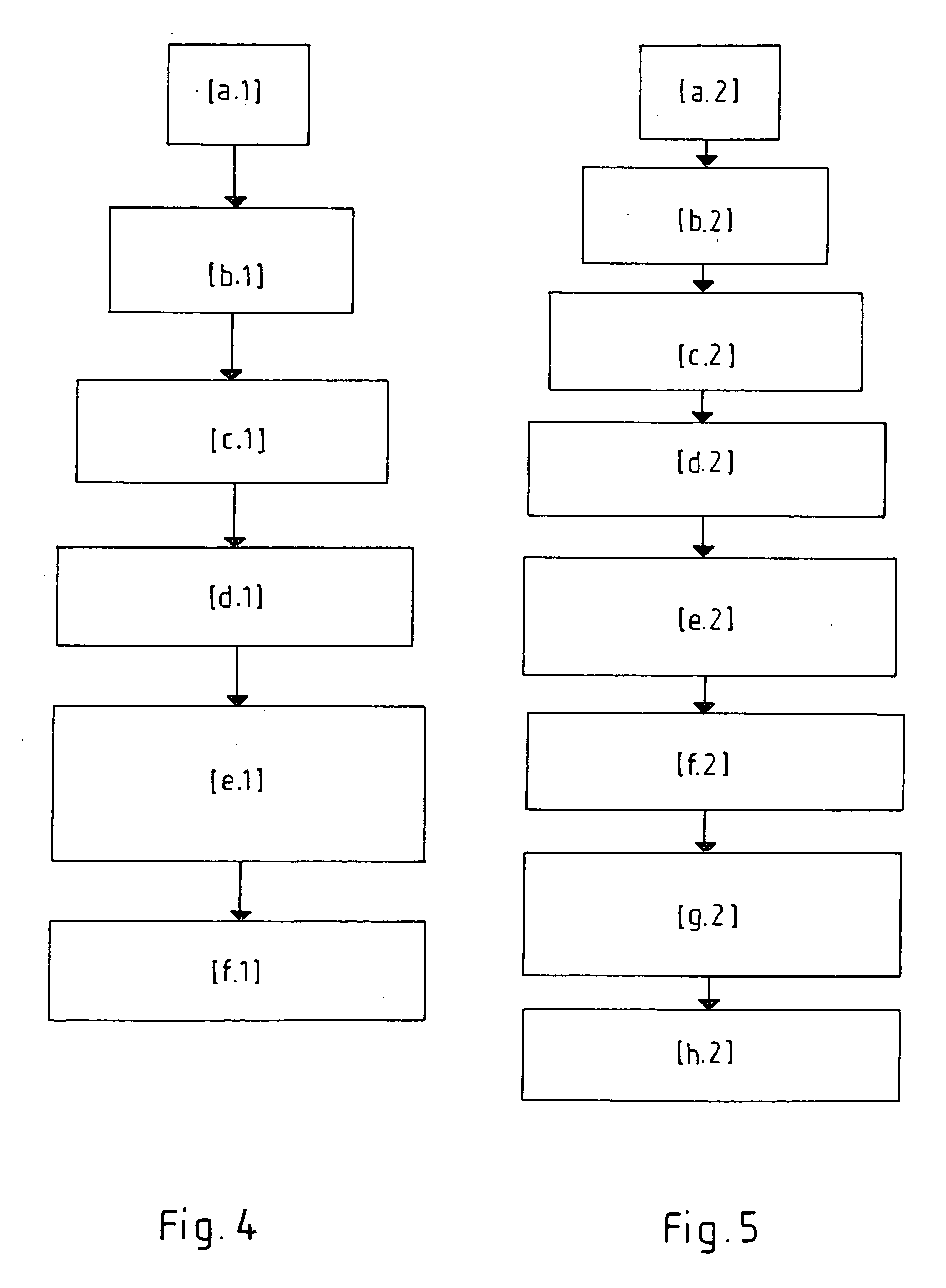Method for identifying obstacles for a motor vehicle, using at least three distance sensors for identifying the laterla extension of an object
a technology of distance sensors and objects, applied in the field of methods for identifying obstacles, can solve problems such as the inability to ensure that each sensor detects the same center of reflection
- Summary
- Abstract
- Description
- Claims
- Application Information
AI Technical Summary
Benefits of technology
Problems solved by technology
Method used
Image
Examples
first embodiment
[0053] To accomplish this, according to FIG. 4, distance lists 20 or 22 or 24 of the three sensor units 10 or 12 or 14 are read in in a first procedural step [a.1]. Here, first distance list 20 relates to first distance value d1, second distance list 22 relates to second distance value d2, and third distance list 24 relates to third distance value d3 (see FIGS. 1B, 2B and 3B).
[0054] After reflex clusters 30 are subsequently detected in distance lists 20, 22, 24 in a second procedural step [b.1], coefficients a, b, c are calculated (=third procedural step [c.1]) from the particular smallest distance values d1min, d2min, d3min in clusters 30.
[0055] The next and fourth procedural step [d.1] involves tracking coefficients a, b, c, where the values of the coefficients and their functional derivations based on time t must remain within physically meaningful limits; this means, in other words, that coefficients a, b, c assigned to measured distance values d1, d2, d3, as well as the coeffic...
second embodiment
[0062] In contrast to FIG. 4, a subsequent additional seventh procedural step [g.2] then performs a back calculation of the model parabolic coefficients for ideal point-shaped objects at these positions. Based on the deviations of tracked parabolic coefficients a, b, c relative to the back-calculated model parabolic coefficients, the present invention according to FIG. 5 uses a final eighth procedural step [h.2] to generate a measure which describes the general deviation from a point-shaped object, thereby enabling conclusions to be drawn about the extent of the object.
[0063] Regarding the flow chart in the case of the second exemplary embodiment of the present method according to FIG. 5, it should be noted that first six procedural steps [a.2], [b.2], [c.2], [d.2], [e.2], [f.2] correspond to first six procedural steps [a.1], [b.1], [c.1], [d.1], [e.1], [f.1] in the flow chart of the first exemplary embodiment according to FIG. 4, where fifth procedural step [e.2] according to FIG. ...
PUM
 Login to View More
Login to View More Abstract
Description
Claims
Application Information
 Login to View More
Login to View More - R&D
- Intellectual Property
- Life Sciences
- Materials
- Tech Scout
- Unparalleled Data Quality
- Higher Quality Content
- 60% Fewer Hallucinations
Browse by: Latest US Patents, China's latest patents, Technical Efficacy Thesaurus, Application Domain, Technology Topic, Popular Technical Reports.
© 2025 PatSnap. All rights reserved.Legal|Privacy policy|Modern Slavery Act Transparency Statement|Sitemap|About US| Contact US: help@patsnap.com



